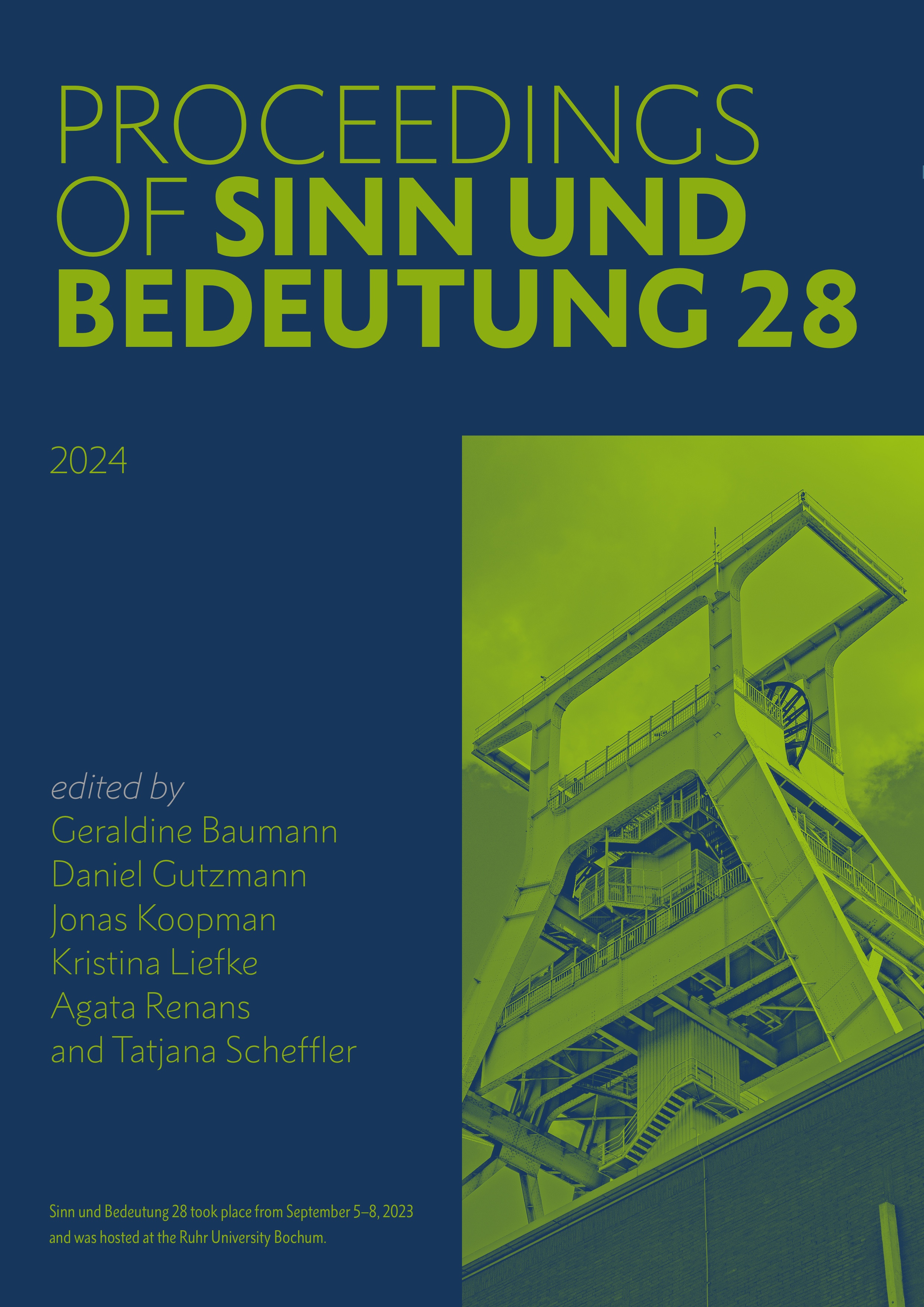Polar particles in Farsi: Anaphora in the scoreboard model of discourse
DOI:
https://doi.org/10.18148/sub/2024.v28.1149Abstract
Cross-linguistically, polar particles can be used in two readings: 'polarity' and 'conformity'. In response to positive polar questions/assertions, the two readings of each particle generate the same proposition. However, in response to negative initiatives, they lead to ambiguity (Krifka, 2013; Roelofsen and Farkas, 2015; Geist and Repp, in press). In this paper, we investigate the reading(s) of the particles 'âre' ‘yes’ and 'na' ‘no’ in Farsi for five types of initiatives: (i) positive assertions, (ii) negative assertions, (iii) negative polar questions (NPQs), (iv) biased negative questions with the discourse particle 'dige' ('dige'-NPQs) and (v) tag questions (TQs). Based on the distribution of readings, we argue that different readings of polar particles react to propositions placed in different compartments of the Scoreboard Model representation.Downloads
Published
2024-12-20
How to Cite
Mohammadi, M., & Romero, M. (2024). Polar particles in Farsi: Anaphora in the scoreboard model of discourse. Proceedings of Sinn Und Bedeutung, 28, 610–629. https://doi.org/10.18148/sub/2024.v28.1149
Issue
Section
Articles
License
Copyright (c) 2024 Maryam Mohammadi, Maribel Romero

This work is licensed under a Creative Commons Attribution 4.0 International License.
https://creativecommons.org/licenses/by/4.0/
